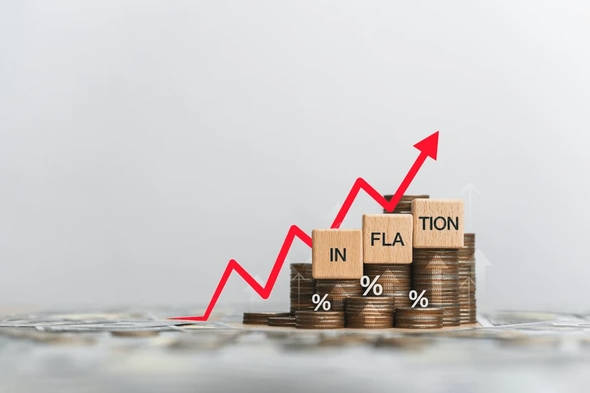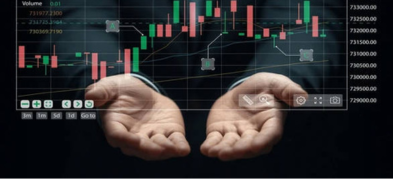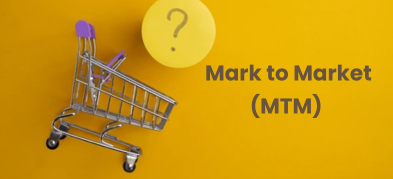
Ultima Markets App
Trade Anytime, Anywhere
Important Information
This website is managed by Ultima Markets’ international entities, and it’s important to emphasise that they are not subject to regulation by the FCA in the UK. Therefore, you must understand that you will not have the FCA’s protection when investing through this website – for example:
- You will not be guaranteed Negative Balance Protection
- You will not be protected by FCA’s leverage restrictions
- You will not have the right to settle disputes via the Financial Ombudsman Service (FOS)
- You will not be protected by Financial Services Compensation Scheme (FSCS)
- Any monies deposited will not be afforded the protection required under the FCA Client Assets Sourcebook. The level of protection for your funds will be determined by the regulations of the relevant local regulator.
Note: Ultima Markets is currently developing a dedicated website for UK clients and expects to onboard UK clients under FCA regulations in 2026.
If you would like to proceed and visit this website, you acknowledge and confirm the following:
- 1.The website is owned by Ultima Markets’ international entities and not by Ultima Markets UK Ltd, which is regulated by the FCA.
- 2.Ultima Markets Limited, or any of the Ultima Markets international entities, are neither based in the UK nor licensed by the FCA.
- 3.You are accessing the website at your own initiative and have not been solicited by Ultima Markets Limited in any way.
- 4.Investing through this website does not grant you the protections provided by the FCA.
- 5.Should you choose to invest through this website or with any of the international Ultima Markets entities, you will be subject to the rules and regulations of the relevant international regulatory authorities, not the FCA.
Ultima Markets wants to make it clear that we are duly licensed and authorised to offer the services and financial derivative products listed on our website. Individuals accessing this website and registering a trading account do so entirely of their own volition and without prior solicitation.
By confirming your decision to proceed with entering the website, you hereby affirm that this decision was solely initiated by you, and no solicitation has been made by any Ultima Markets entity.
I confirm my intention to proceed and enter this website Please direct me to the website operated by Ultima Markets , regulated by the FCA in the United KingdomHow to Identify the Types Of Inflation
Prices do not rise for a single reason. Economists use different types of inflation to describe what is pushing prices higher and how quickly it is happening. When you can name the type, you can read new data with context and anticipate which policies and market reactions are most likely.

What Inflation Means
Inflation is a sustained increase in the general price level of goods and services. As prices rise, each unit of currency buys less. A low and steady rate is normal in a healthy economy, but fast or persistent increases can strain household budgets and business planning. Understanding the types of inflation helps you separate temporary noise from longer-lasting trends.
Why Knowing Inflation Type Matters
When you name the type, the headline number turns into a clear story.
- Demand pull hints that spending is running hot
- Cost push points to rising input costs
- Built in signals that wages and expectations are keeping prices elevated
This simple map lets readers, businesses and policymakers focus on the real driver without diving into theory.
Types of Inflation By Cause

Demand Pull Inflation
Spending runs ahead of the economy’s capacity to supply goods and services. Shops face limited stock, order books fill, and prices rise to balance demand with supply.
What To Watch:
- Strong retail sales and services activity
- High job vacancies with low unemployment
- Rising capacity use and solid GDP growth
Cost Push Inflation
The pressure starts on the supply side. When input costs increase, firms pass them to customers. Common triggers include higher wages, energy shocks, transport bottlenecks and supply chain disruptions.
What To Watch:
- Spikes in oil, gas or key raw materials
- Producer prices rising ahead of consumer prices
- Slower growth alongside higher prices
Built In Inflation
Also called a wage price spiral. If people expect prices to keep rising, workers seek higher pay and companies lift prices to cover those increases. Expectations keep the loop going.
What To Watch:
- Persistent increases across many categories
- Pay growth running ahead of productivity
- Frequent price revisions by firms
Wage Inflation
A close cousin of built in inflation. Wages rise faster than productivity and firms lift prices to cover higher labour costs, especially in services.
What To Watch:
- Unit labour costs
- Wage settlements clustered around bargaining dates
- Services prices trending higher than goods
Types of Inflation By Speed
Knowing the types of inflation by speed tells you how intense the pressure is.
| Type | Typical Pace | What It Feels Like |
| Creeping Inflation | about 1 to 3 percent a year | Stable and manageable |
| Walking Inflation | about 3 to 10 percent a year | Noticeable squeeze on budgets |
| Galloping Inflation | about 10 to 100 percent a year | Disruptive and hard to plan |
| Hyperinflation | around 50 percent or more in a month | Loss of confidence in the currency |
Once you can name the pace, identify what is driving it. Use the quick guide below to link common data to the three core causes.
How Is Inflation Measured
Analysts compare several measures to separate noisy moves from the trend.

Headline And Core
- Headline up on energy or food while core is calm points to cost push
- Headline and core rising together suggests broad demand or built in pressure
Goods And Services
- Goods strength often follows supply chains and commodities which leans cost push
- Services strength often reflects wages and expectations which leans built in
Tradable And Non Tradable
- Tradables react to exchange rates and global costs which is another cost push clue
- Non tradables track local wages and capacity hinting at built in or demand pull
Quick Confirmers
- Median or trimmed mean versions help you check if a few volatile items or a broad rise are moving the average
The key is to start with headline and core then glance at services and non tradables to name the driver.
Special States You Should Know
These describe the mix of growth and inflation rather than separate causes, but they interact with the types of inflation above.
Stagflation
High inflation with weak growth and a softer labour market. Actions that cool prices can slow growth further.
Deflation
A broad fall in prices. It can squeeze company revenues and increase the real burden of debt if it lasts.
Hyperinflation
A breakdown in price stability where money loses credibility and normal price setting fails.
Consumer Experience Effects
Shrinkflation
Pack size gets smaller while the sticker price stays the same. The effective price per unit rises.
Skimpflation
Quality or service falls while the price is unchanged. You pay the same for less value.
These effects often accompany cost pressure or sticky built in pressure.
Asset Prices And Consumer Prices
Rising prices of assets such as houses, land and shares are not the same as consumer price inflation. Most consumer indexes capture housing through rents or owners’ equivalent rent, not the purchase price of a home. Keep this distinction in mind when linking property booms to inflation headlines.
Conclusion
Inflation comes in patterns. It can be pulled by strong demand, pushed by rising costs, or sustained by expectations and wages. It can move slowly or quickly, and it can be global through tradables or local through services and non tradables.
If you first name the pace, then identify the driver with headline, core and a quick check of goods versus services, you can read each release with clarity and decide what truly matters for policy, planning and markets.
Disclaimer: This content is provided for informational purposes only and does not constitute, and should not be construed as, financial, investment, or other professional advice. No statement or opinion contained here in should be considered a recommendation by Ultima Markets or the author regarding any specific investment product, strategy, or transaction. Readers are advised not to rely solely on this material when making investment decisions and should seek independent advice where appropriate.












